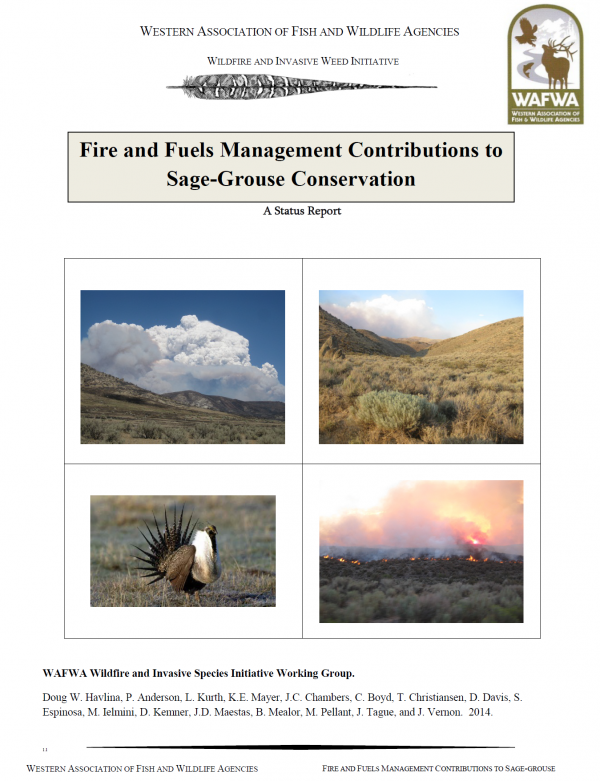Within big sagebrush (Artemisia tridentata) communities, expansion of invasive plants and changes in wildfire patterns have emerged as the greatest threat to sage-grouse habitats, particularly in the western part of its range. Feedback cycles between invasive species and large intense wildfires effectively fragment habitats, reduce sagebrush cover, and create fire-prone landscape conditions detrimental to sage-grouse. In response to this threat, numerous efforts to respond to wildland fires and manage vegetation are underway, with an overarching intent of conserving sage-grouse and their habitats. This report, developed by the Western Association of Fish and Wildlife Agencies (WAFWA), Wildfire and Invasive Species Initiative Working Group (Working Group), summarizes the current state of Fire Operations and Fuels management functions. While other status reports have been completed, there has been no synthesis of the fire and fuels management programs at the private, local, state, and federal agency scales. The intent of this report is to illustrate the type and responsiveness of efforts being made. Finally, the report concludes by presenting future options and a series of recommendations that may inform future policy and allocation decisions.
Suggested Citation:
Havlina, Doug W., P. Anderson, L. Kurth, K.E. Mayer, J.C. Chambers, C. Boyd, T. Christiansen, D. Davis, S. Espinosa, M. Ielmini, D. Kemner, J.D. Maestas, B. Mealor, M. Pellant, J. Tague, and J. Vernon. 2015. Fire and Fuels Management Contributions to Sage-Grouse Conservation: A Status Report. Western Association of Fish and Wildlife Agencies. Unpublished Report. Cheyenne, Wyoming. 73 pp.
WAFWA Wildfire and Invasive Species Initiative Working Group.
Attached Files
| File | Action |
|---|---|
| WAFWA_Fire Report v1.01.pdf | Download |
- Version
- File Type pdf
- File Size 3.21 MB
- Publication Date July 1, 2015
